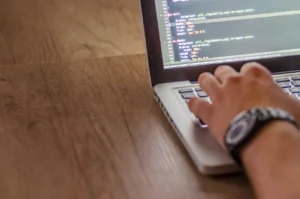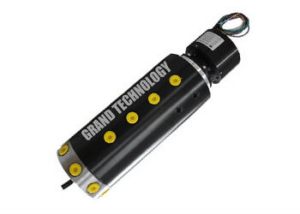If you need to erase hard drive or SSD partitions in Windows for one reason or another, You can do this by using built-in system tools or through third-party partition management software. With some exceptions, this does not cause any problem.
This tutorial details how to erase a disk partition in Windows 10, 8.1 and Windows 7 in Disk Management, the command line (Diskpart) and the use of software without third party costs, as well as possible disposal issues. If you need to erase all partitions on your hard drive or other storage device without the drive being a system partition, you can use a separate instruction How to erase partitions on a USB flash drive (this will also be suitable for other units).
How to erase a disk partition in Windows' built-in disk management utility
All recent versions of Windows have a built-in disk partition utility, its use is very easy and in the basic case you must follow these simple steps to erase a partition:
- Presione Win + R on your keyboard, scribe diskmgmt.msc and hit Enter.
- In the Disk Management utility that opens, right click on the partition you want to erase; You can do this in the list of partitions shown at the top or in the graphical view of disk partitions at the bottom. I prefer to use the second option.
- Select Delete volume.
- Confirm partition deletion.
- In the future, you can use the unused space to create new partitions or to join it to other existing partitions, you can read about it here, as an example: How to expand C drive at the expense of D drive.
Everything described works without problems as long as the partitions are not from the system or are not used or needed – for this case the option “Clear volume” may not be active or may be missing, consider these cases in the possible errors section.
There are also nuances, for logical partitions located on an extended partition. For this case, these partitions in disk management are in the area highlighted in green and above them, in a separate section of the instructions.
Removing HDD and SSD partitions via command line
You can also erase HDD or SSD partitions from the command line using the DISKPART utility.. Be very careful.If you confuse the partition numbers, can delete important data:
- Run the command line as administrator. In Windows 10, you can do it in the following way: find the command line by looking in the taskbar, right-click on the found result and select “Execute as an administrator”. These instructions describe other methods.
- In the command prompt that opens, type DISKPART and press Enter.
- Then use the following commands in order, hitting Enter after each:
- list of discs – will give you the numbers of the mounted disks. Memorize the partition number of the disk you want to erase and then N.
- choose disk N
- partition list – will display the partition numbers on the selected disk, remember the number of the partition you want to delete and then M.
- select partition M
- delete partition
- Shall
Due, the partition we selected will be removed from the disk, leaving unused space on it, which can be used to create new partitions or join existing ones.
Delete an extended partition from disk
Many users, especially on MBR disks, have extended partitions, which in Disk Management are highlighted with a green box, and its type is indicated in DISKPART when you run the partition list command. Inside these partitions there are logical partitions: if we delete a logical partition, the space left inside the primary partition will not be available to attach it.
If we want, we can erase the extended partition with the following method:
- In Disk Management, first delete all logical partitions inside extended partition without exception, using element “Clear volume” in the context menu. Then, open the context menu of the extended partition and select “Delete partition”.
- A DISKPART, as previously described, one by one, using the commands in the steps 7 Y 9, delete all logical partitions and later, using the same method, delete the extended partition that contained them. An example is shown in the next screenshot.
- In some programs it is feasible to convert an extended partition into a primary partition (as an example, in Aomei Partition Assistant), but I don't know of any utility where this function is available in the free version of the program. At the same time, this conversion is only feasible if the number of primary and logical partitions does not exceed the limit of the number of primary partitions for a given disk type (for primary partitions MBR-4).
Programs to manage disk partitions
There are many programs that allow you to erase partitions on disks. Among those in which this functionality is enabled for free are Aomei Partition Assistant Standard (in Russian) y Minitool Partition Wizard Free (no russian). Perhaps for some people this type of program is more convenient than the built-in Windows tools 10, 8.1 and Windows 7.
All actions in these programs can be performed using the main and contextual menus of the interface, followed by pressing the Apply button. Unfortunately, most cool features (how to convert an extended partition to a primary partition) are blocked in the free versions, but simple partition deletion works.
Another useful function of the above utilities is to create a bootable drive and then run disk partition management from it.: this will allow you to perform operations on those partitions that, for any circustance, can't run windows. But be careful: These disk partitions may be essential for the proper functioning of the system.
Possible problems and errors when deleting partitions of a hard drive or SSD
Then, A list of typical problems and errors that you may encounter when trying to erase an unwanted partition from a disk is displayed using the built-in Windows tools 10 and other versions:
- The button “Clear volume” is inactive or does not exist. A Diskpart, for this case, you will receive the message “Virtual disk service error. Device is already in use ”or“ Cleaning is not possible for current system or boot volume, or for volumes with swap files, lock or hibernate "; most likely it is a system partition or a partition containing the items mentioned in the previous message: swap file, crash dumps or hibernate and suspend files. In the case of a system partition that you don't want to see in Explorer, you can simply erase the drive letter (in Disk Management, example actions: How to hide the recovery partition in Windows). If you need to delete it and it is not a system partition, try to find out which system items (swap file, hibernation, etc.) were placed on it and remove them. The Windows swap file 10, 8.1 and Windows 7 can help here.
- The message “Now only one volume is being used. To erase this volume forcibly, click Yes ". in Disk Management: generally indicates that there may be something running on this volume (possibly in the background). You may get this same error if you select this partition as the partition to install in the Windows Store app install alternatives 10. As usual, partition deletion goes smoothly, but its probability is not zero.
- Virtual disk service error “The extended partition is not empty” – Occurs if not all logical partitions have been removed from the extended partition.
- Unable to erase protected partition without forcing protection settings – It usually happens when trying to delete hidden partitions with current bootloader and partition recovery environment. If you need to get rid of that partition in explorer, where it started to appear, you just have to erase the letter of that partition without erasing the partition itself.
In conclusion, if you find E errors / S during partition, it may be a faulty drive or a connection obstacle with your computer.
Video-tutorial
If there are additional nuances in your case when deleting partitions, describe the situation in detail in the comments, I will try to help.
And maybe this is also interesting:






